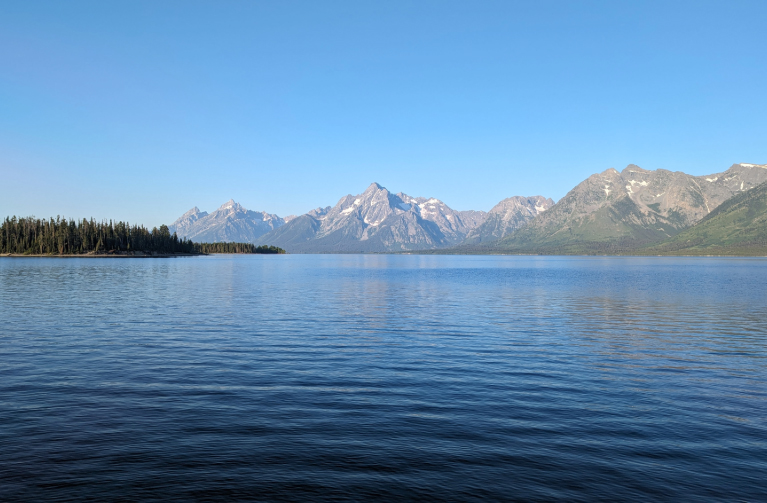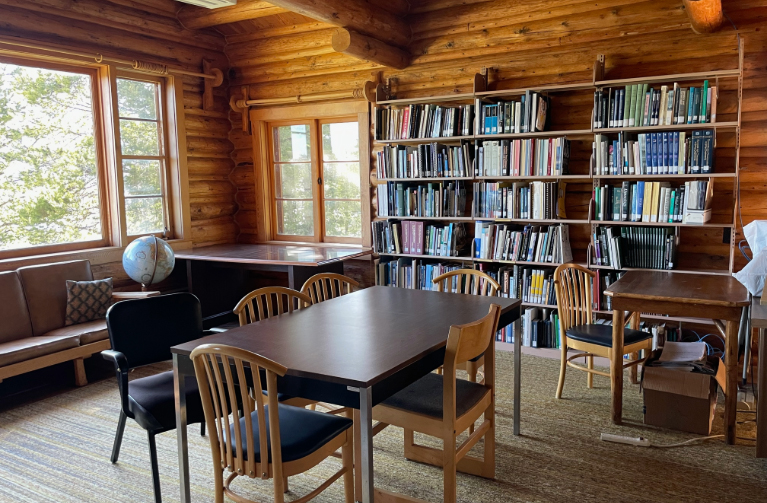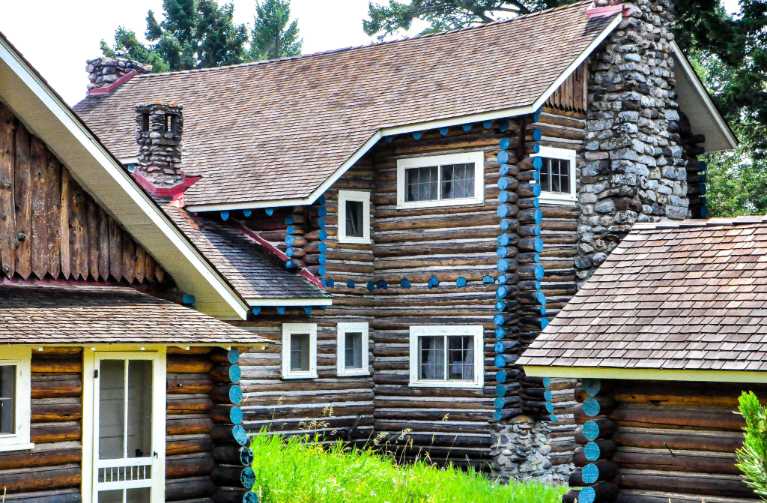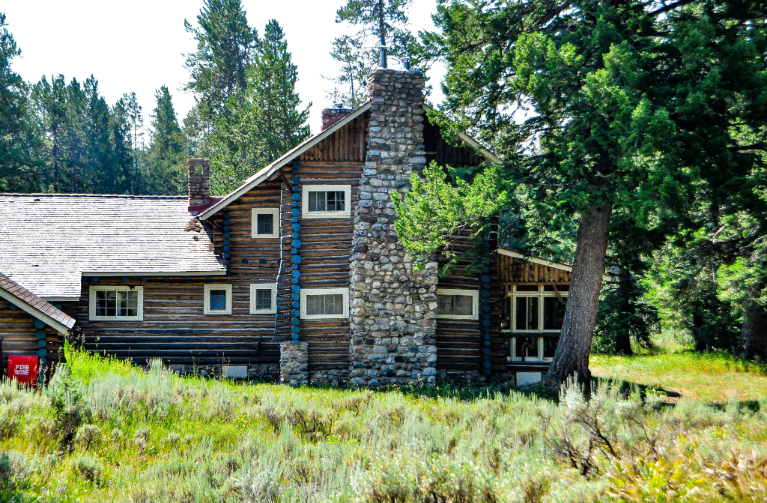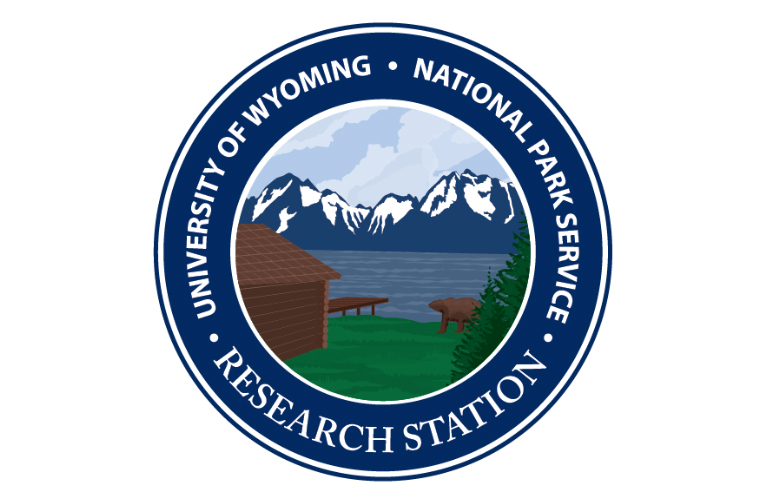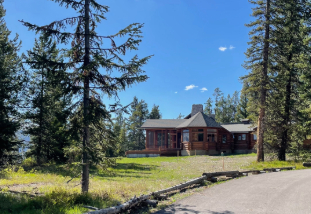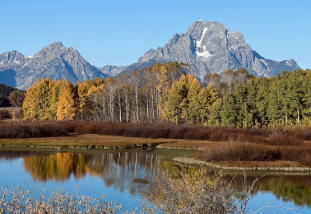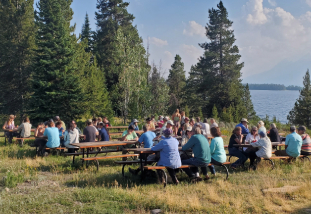Research
View Final Reports Submitted by Past Small Grant Awardees
Reports from past research at the station are available online. Follow these links to view reports from 1954-1976, and reports from 1977-present.
Recent Research Supported by Small Grants from UW and the NPS
2024
- Zachariah Gompert, Utah State University, Contemporary evolution and climatic (mal)adaptation in the Northern Blue butterfly (Lycaeides idas)
- Sierra Jaeger, University of South Carolina, Population demography of the last populations of the Yellowstone sand verbena (Abronia ammophila)
- Taylor Johaneman, University of Colorado Boulder, Impacts of artificial levees on the relationship between fluvial ecogeomorphic processes and floodplain carbon storage
- Elise Loggers, Montana State University, Behavior and nutritional condition buffer a large-endotherm from an ever-changing environment
- Adrienne Stanley, Utah State University, What are the drivers behind eutrophication of alpine lakes in Western North America: A case study from Wyoming
- B. Derrick Taff,The Pennsylvania State University, Informing human waste management strategies in Grand Teton National Park: Integrating visitor perspectives, behavioral intentions, and Park communication strategies
- Anne Beeman, University of Wyoming, Effects of seed mix composition, soil tilling, and soil texture on shrub establishment and native species diversity in sagebrush steppe restoration
- Molly Caldwell, University of Wyoming, How do American bison (Bison bison), an ecosystem engineer, influence ungulate space and resource use? A case study of the Yellowstone ungulate community
- Sara Germain,University of Wyoming, Mechanisms of ecotype transitions in disturbed subalpine forests: Does invasion beget invasion?
- Alexis Hunter Hollander, University of Wyoming, Assessing the conservation status of Western pearlshell mussels in Grand Teton National Park
- Madeline Lewis, University of Wyoming, Assembling Wyoming: Examining ancient metamorphic and tectonic conditions that formed the southern Teton gneisses
- Lauren Wetterau,University of Wyoming, Effects of red squirrel middens on species biodiversity and richness in the Greater Yellowstone Ecosystem
2023
- Michela Corsini, Boise State University, Preserving the dark side of the night: Insights into nocturnal insects’ responses to different artificial light colors in Grand Teton National Park
- Konshau Duman, University of California, Davis, Red crossbill diet study
- Taylor Johaneman, University of Colorado, Boulder, Linking hydrogeomorphic processes to floodplain carbon stocks on the Snake River, Grand Teton National Park, Wyoming
- Dustin Meattey, Biodiversity Research Institute, Maine, Greater Yellowstone Harlequin duck monitoring and eDNA investigation
- Colby Parkinson, Pennsylvania State University, Bicycle patterns in Grand Teton National Park’s multi-use pathway: Integrating behavior, recreation specialization, and big data
- Zack DeLuca, University of Montana, Hydrogeomorphic response to extreme flooding in Yellowstone National Park
- Anna Chalfoun, University of Wyoming, University of Idaho, Effects of sagebrush restoration efforts in Grand Teton National Park on avian habitat, abundance, and diversity over time
- Kathryn Davis, University of Wyoming, How does ecosystem engineering by beavers impact amphibian occupancy and connectivity?
- William Fetzer, University of Wyoming, Quantifying energy pathways supporting the Jackson Lake fishery
- Jonathan Lautenbach, University of Wyoming, Understanding Columbian sharp-tailed grouse population origins and connectivity in Grand Teton National Park
- Andrew Miller, University of Wyoming, Evolution of hydrothermal fluids at Beryl Springs, YNP
- Lusha Tronstad, University of Wyoming, Assessing parasites of native bumble bees in Grand Teton National Park: Are they limiting declining species
2022
- Lusha Tronstad, University of Wyoming. Building an integrative future for mountain research in the high Teton Range: Linking
NPS geophysical research with long-term ecological monitoring of aquatic ecosystems
- Dan MacNulty, Utah State University. Trophic cascade or trickle? Understanding the indirect effects of wolves on aspen
- Philip Halliwell, Colorado State University. The sagebrush blues: Butterfly pollinator assemblages in the GYE
- Teodora Rautu, Montana State University. How does whitebark pine affect snowpack and streamflow within the Greater Yellowstone Ecosystem?
- Anna Shampain, Colorado State University. Glacial meltwater as a source of persistent organic pollutants and trace elements to high altitude Rocky Mountain lakes
- Rebecca Levine, University of Wyoming. The costs of thermoregulatory behavior: How are moose in the Greater Yellowstone coping as summers intensify?
- William McDonald, University of Wyoming. Wyoming river otter project: Understanding the distribution, abundance and connectivity of river otters in Wyoming
- Jeffrey Baldock, Wyoming Cooperative Fish and Wildlife Research Unit, University of Wyoming. Evaluating the role of spring-fed streams to Yellowstone cutthroat trout
- Hilary Byerly Flint, University of Wyoming. Designing effective and equitable approaches to transboundary wildlife conservation around national parks
- Ellen Keaveny, University of Wyoming. The influence of season and climate on montane bumble bee physiology and abundance
- Joshua Layfield, University of Wyoming. Winter space use and habitat selection of migratory-subadult Golden Eagles (Aquila Chrystaetos) in Wyoming
- Bryce Shoup, University of Wyoming. Using an isotope mass balance approach to understand lake evaporation, health, and how climate change will impact Jackson Lake in Grand Teton National Park
2021
- James Cohen, Weber State University, Population variation of three Yellowstone grasses, including the rare endemic Agrostis rossiae (Ross’ Bentgrass)
- Lusha Tronstad, University of Wyoming. Moving beyond morphology: Integrating molecular metabarcoding into long-term alpine stream research to better understand biodiversity change
- Jeffrey Skibins, East Carolina University. Research proposal: Visitor motivations for campground site selection at Grand Teton National Park
- Troy Koser, Montana State University, Understanding the ecology of winter ticks (Dermacentor albipictus) in the Greater Yellowstone Ecosystem using detection canines and implications for the Jackson moose herd
- Kristin Barker, University of California – Berkeley, Evaluating how and why humans alter natural patterns of wolf predation
- Natali Kragh, Montana State University, Updating and assessing the accuracy of the geologic map of Yellowstone National Park
- Abigail Sisneros-Kidd, University of Wyoming, Integrated digital storytelling and story-mapping as a novel method to inform recreation-wildlife coexistence in Jackson Hole, WY
- Melanie Murphy, University of Wyoming, Beaver and biodiversity linkages in Grand Teton National Park
- Bridger James Huhn, University of Wyoming, Testing biophysical mechanisms to explain endemic plant locations in the Greater Yellowstone Ecosystem.
- Joseph Holbrook, University of Wyoming, Recreational influence on the dietary and spatial patterns of Montane Red Fox in Grand Teton National Park
- Jordan Von Eggers, University of Wyoming, Using eDNA in alpine lake sediment cores to track multiple stressors, multiple trophic levels, and the rise of Anthropocene biodiversity changes
- Janey Fugate, University of Wyoming, How do ungulates learn to migrate? A century-long case study with Yellowstone bison
Quick Links
Contact Us
Research Station at the AMK Ranch
Open June through September
Mailing Address for letters (Checked weekly during summer season)
UW-NPS Research StationPO Box 170
Moran, WY 83013-0170
Address for shipping packages via Fed-Ex:
Let us know when shipping packages as sometimes they are delivered to the PO Box instead of the Station.
c/o UW-NPS Research Station, Grand Teton National Park1 AMK Ranch Road
Moran, WY 83013-0170
Laramie Address
Open year-round
UW-NPS Research
Box 3166
1000 E. University Ave.
Laramie, WY 82071
Connect:
Careers | Mailing List | Donate | Pay
E-mail: uwnps@uwyo.edu

